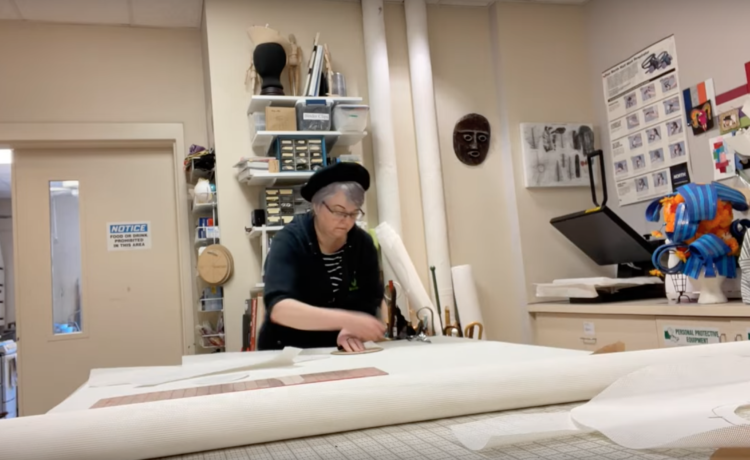One of the first people we connected with was Dr. David Jortner (full professor of theatre and graduate program director, Baylor University), who has been tracking the department closings for the past four to five years. In 2022, he presented on this topic at the Association for Theatre in Higher Education (ATHE) conference. He addressed what he felt were the core issues of this crisis: “Higher education is facing a variety of economic and social challenges, including declining state and federal funding, budgetary shortfalls, and a lack of student demand/enrollment.” He also observed what Robin Wilson (former senior writer for the Chronicle of Higher Education) detailed in 2009 in the wake of the global financial crisis, which was that administrators were making what they call “vertical cuts.” Such cuts single out departments that are considered “not crucial to the university’s mission,” do not attract a high number of students, and bring in “little outside research money.” Unfortunately, a great many administrators feel that theatre departments meet these criteria. In our conversation with colleagues, we found that design and production programs are disproportionately impacted by these cuts and mergers.
In her article, Wilson noted that many colleges and universities were “trying to preserve both academic programs and tenured faculty jobs.” They did so by “laying off staff members, freezing future faculty hiring, imposing furloughs, and trimming operating expenses.” They attempted to merge departments instead of eliminating them all together. Unfortunately, between 2009 and 2020, state and federal funding did not return to the levels seen prior to 2008, enrollment numbers continued to decrease, and costs continued to rise. As a result, Jortner explains, “the massive economic devastation wrought by the pandemic has accelerated budgetary difficulties and the rate of departmental closures.” He also observed:
Theatre is often targeted during times of financial distress because of the expenses involved in operating a theatre program. Theatre classes tend to (by necessity) have small student/teacher ratios. This may also be in contrast with large science or social science lecture classes (or even online classes). Unlike other programs in the humanities, theatre programs often have additional staff and costs such as costume and scene shop managers and technicians, as well as the physical costs of costumes, scenery, and props. While revenue from ticket sales may cover production budgets (and I know that many programs work on this model), they do not cover the salaries of additional staff and technicians. In contrast, in the sciences, the cost of lab assistants (those which are not covered by graduate stipends) are often rolled into the grants, which keep those labs open.
I am heartbroken for all the potential theatre students…and generally horrified at how little the university seems to comprehend the value of arts education.
After our conversation with David, we continued to connect with other colleagues impacted by their universities’ program and department cuts. We hosted a listening session at the 2024 American Theatre Costumers Association’s summer workshop and posted inquiries for input in several Facebook communities for theatre artists, leaders, administrators, and educators. For this article, instead of focusing on statistics and data, we wanted to focus on the human stories. So, we asked our colleagues to share what their experiences had been and what they’ve been observing. Here are some of those responses:
- Costume faculty at a small state university campus on the West Coast: “I’m currently teaching at a campus where budget cuts are severe, and it’s affecting students’ progress of graduating on time and taking the classes they need in order to graduate.”
- Costume faculty at a large public university system in the upper Midwest: “We’re fighting to keep our program after several campuses in the state system have been closed. Tenured faculty have been laid off.”
- Costume faculty at a state university campus in the Pacific Northwest: “Not an actual closure here, but a reduction. We’ve had two tenured, full costume professors for the past twenty years, and that will be reduced to one in a year.”
- Instructor and costumer at a flagship state university in the Pacific Northwest: “The theatre department at our local community college was shut down…and it definitely impacted our numbers, because we used to get transfers from there.”
- Costume designer and technician at a state university in the Pacific Northwest: “Our department formally closed last year. It was the only full-time costuming position in the entire state and the only university with a full-fledged theatre program. I am heartbroken for all the potential theatre students…and generally horrified at how little the university seems to comprehend the value of arts education.”
- Retired faculty at a small state university in the South: “This week marks the two-year anniversary of the closure of my department and my forced retirement.”
- Drama faculty at a private religious university: “We found out on 20 November that our theatre major and theatre education major were cut, along with my position. Our students and community are deeply grieved. I have been here for thirteen years.”
Administrators at colleges and universities across the country are still crunching numbers. They are still planning for job cuts and early retirements. They are looking for more and more programs and departments to eliminate.
So, what’s next? We know that administrators at colleges and universities across the country are still crunching numbers. They are still planning for job cuts and early retirements. They are looking for more and more programs and departments to eliminate. In the face of all that’s coming our way, theatre professors must be proactive. We have to assume that our department is next and be prepared.
We found hope and guidance in what Ludwig wrote in 2020, when he reminded us that “We can make a case for our value in a cultural context but that is not enough in the current climate for our field to thrive… We can no longer afford to be isolated and theatre-centric as we have traditionally been.”
- Jortner’s insightful and informative action steps offer a pathway forward. He encourages us:
- We have to remind administrators that theatre is an integral part of the university’s mission and curriculum.
- We have to remind faculty in other departments that theatre can contribute enormously to their pedagogy and benefit their students.
- We have to remind faculty that theatre training is applicable to skills needed in law, business, medicine, applied physical sciences, athletics, engineering, communication, and social work.






